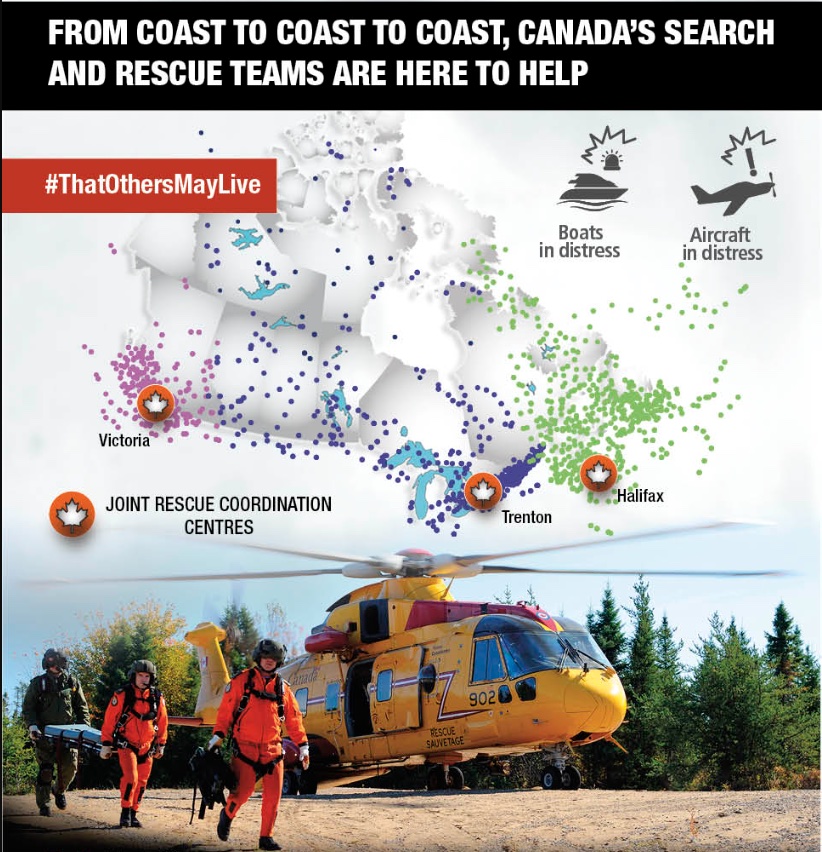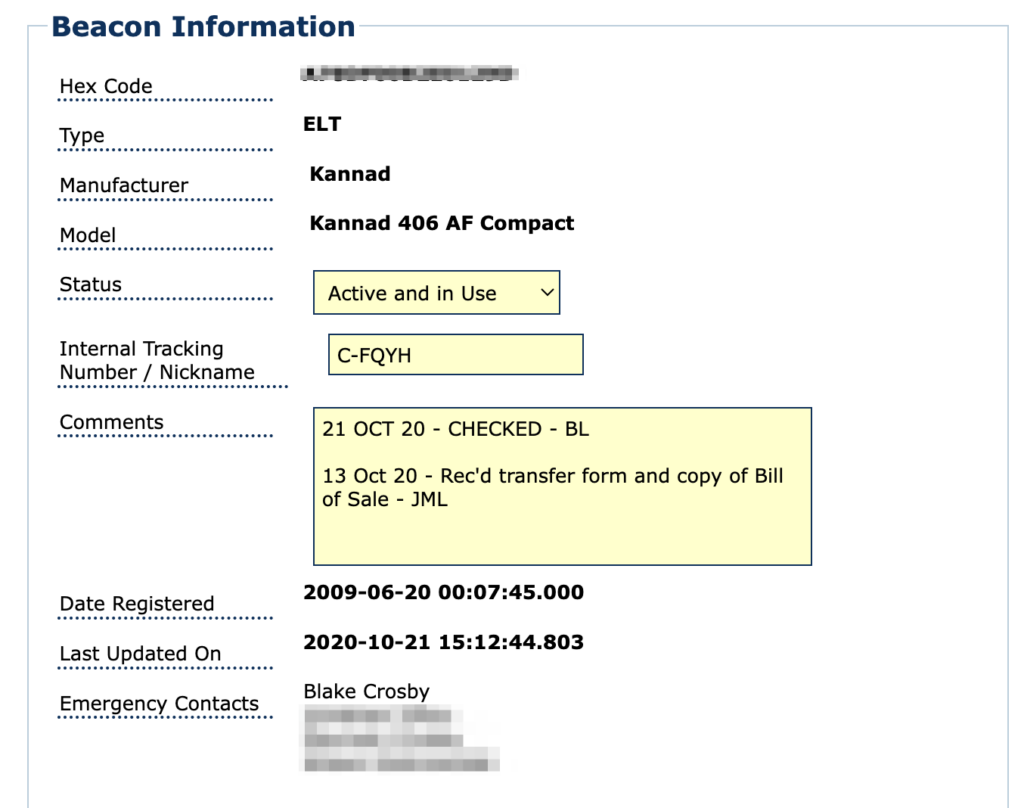In Canada, there are three ways search and rescue (SAR) officials will initiate the start of a search for a missing aircraft. Of which, only two of them will be initiated automatically during certain events:
- Activation of an Emergency Locator Transmitter (ELT) on board the aicraft.
- An overdue aircraft due to a flight plan not being closed during the specified SAR time.
The third way is “manual” activation by a responsible person who has been following the flight using a flight itinerary.

Types of SAR Activations
The call to the emergency contact is the first step in initiating the search and rescue effort. It does not necessarily mean that the aircraft is missing or that loss of life has occurred.
Overdue Aircraft / Open Flight Plan
Usually the first person to be contacted will be the pilot of the aircraft on their cell phone. In most cases the pilot is reachable and the flight plan is closed (In the case of an overdue aircraft).
In Canada, VFR flight plans are automatically opened at the time of departure listed in the plan. But they are not automatically closed unless the pilot closes it within 60 minutes after the estimated time of arrival. If this is the case and the pilot is unreachable, then NavCanada will reach out to the emergency contact listed on the flight plan to see if they know where the pilot/aircraft is.
Emergency Locator Transmitter Activation
ELTs are activated automatically in the event of an aircraft crash and are registered with the Beacon Registry.
The Canadian Beacon Registry is an integral part of COSPAS-SARSAT, the search and rescue satellite system designed to provide distress alert and location data to search and rescue authorities. The Canadian Beacon Registry is co-located with the Canadian Mission Control Centre (CMCC) at CFB Trenton, for use by responders in search and rescue operations.
The list of emergency contacts is managed by the aircraft owner. The CMCC will call the contacts in the order in which they are listed in the registry.

Flight Itineraries
Flight itineraries are filed with a “responsible person”. This person can be your emergency contact, dispatch, or anyone else the pilot deems responsible enough to contact SAR in the event the aircraft is missing or overdue.
If the aircraft is missing then it is this person who initiates the SAR process by contacting the JRCC on 1-800-267-7270
Educating Your Emergency Contact
In all three cases it’s important to let your emergency contacts know what to do if they receive a call from the NavCanada, the Joint Rescue Coordination Centre (JRCC) in either Victoria, Trenton, or Halifax, or make the call themselves from an overdue flight itinerary.
As the pilot, let the emergency contact know that they are being listed as such. They should agree and understand to the responsibilities before listing them on a flight plan or beacon registry.
As the emergency contact:
- Double check the aircraft is still in the air. Sometimes the aircraft just might be late due to higher than forecasted winds or a late departure. Using online services such as FlightAware or Flight Radar 24 may be able to show you if the aircraft is still flying.
- Try contacting the pilot on an alternative number (such as a home number).
- Call other friends or family that the aircraft might have been meeting at the destination to see if it has arrived.
If you are confident that the aircraft is missing please contact the the JRCC on 1-800-267-7270.


